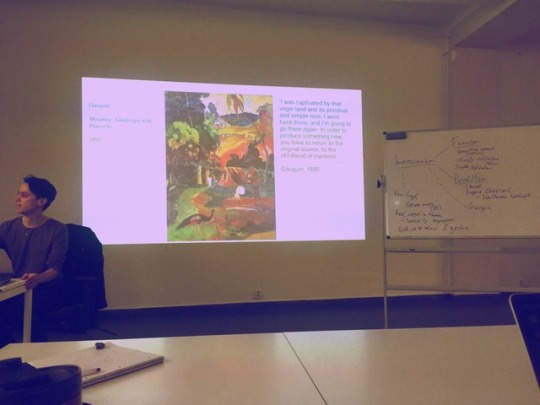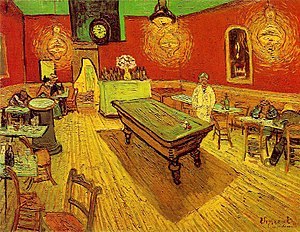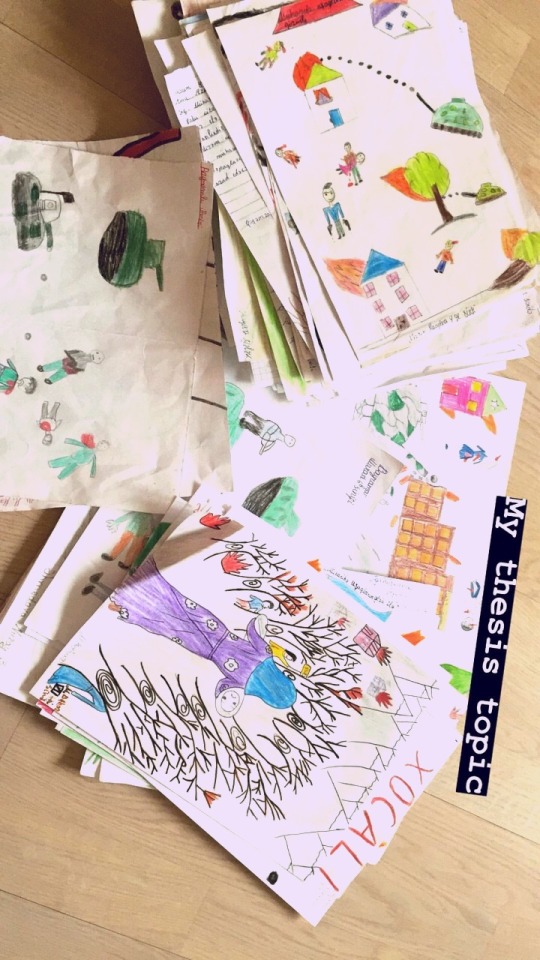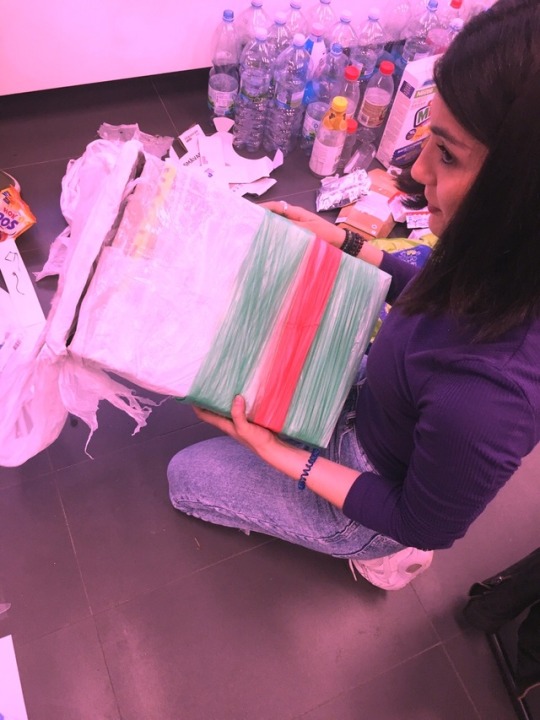#year 1 phonics is A NIGHTMARE
Explore tagged Tumblr posts
Text
Gritting my teeth: I LOVE my teaching placement. I LOVE working 10-12 hours a day for FREE
#not cotl but#GOD#why did i choose primary#year 1 phonics is A NIGHTMARE#im in my final teaching year and good LORD#somehow im teaching ALL SONGS for the nativity#i am UNPAID and IN UNIVERSITY#this is why teachers drink isnt it#OOC vent
1 note
·
View note
Text
Rewards: It's saved my sanity
Rewards: It's saved my sanity
My adorable goblin (7 next month) hated homeschooling. Hated homework. Fidgeted and rolled around and generally did everything she could to avoid learning. Retaining information? Ha. Instructions? Forget it. It was a nightmare. I hated homeschooling. I dreamed of just chucking her into the school system before I completely lost my marbles. I was convinced I'd have the least-schooled, most illiterate child in existence. Pulling teeth would be easier than teaching her anything.
But now?
Today she did two full hours of learning and asked if she could do more. We did addition, subtraction, handwriting (her least favorite now), ABC review, number review, sight words, reading, and art. I even introduced counting money/learning denominations without frustrations. She read a FULL SENTENCE without help. We sounded out some bigger words and her understanding was THERE. BOOM.
Math worksheet? A minute of explaining the concept (if new) and she merrily frolics off to her baby brother safe desk (2 year old book snatching terror) and she completes it, happily. I used to have to hover over her and explain the same thing over and over again no matter what the subject was - now she just gets it.
She's thrilled to learn to read now, where before she hated it. Even picked out a book all by herself (instead of getting a toy!) to learn to read with me.
Rewards have literally put the fire in her desire to learn.
She now gets stickers - three hours of cutting stickers was so, so worth it. Each sticker is worth 10c, she can trade 10 stickers in for $1. We do three super easy worksheets (has to be 98%+ correct) for one sticker, or one hard worksheet (even with help) for a sticker.
One reading lesson equals a sticker if she pays attention and works hard at it. I tell her: Mistakes don't matter, everyone makes mistakes when they're learning, just ask if you're not sure. We introduced a new phonics concept today and she made a lot of mistakes - but earned herself a sticker with how she buckled down, focused, and asked if she wasn't sure (versus guessing).
I'll give her an extra sticker at the end of the day if she's done great overall, which just motivates her even more.
She's also working extra hard on her reading homework because for each book she reads on her own - she gets ten stickers / $1.
Tonight she asked for extra homework because she counted her stickers and had nine and wanted to earn another. She did a coloring page and two simple handwriting worksheets and got that tenth sticker. She despises handwriting homework, but her workbook has cool unicorn coloring pages that she loves. I just got her new colored pencils and sparkly crayons and markers - she's been going ham for those pages. But she's gotta do the handwriting pages for the letter first (earning her a sticker) before she can color.
She saves her money for buying whatever she wants, like whacky cat toys, two pound buckets of slime. She also gets offered optional chores to make money (boy does she jump at those opportunities). I buy her toys regardless, but she really seems to enjoy earning and buying things herself.
Simple stickers and a couple bucks, it's saved my sanity and made my goblin excited about school.
0 notes
Text
Week 7
Monday
Art History With Theo

Impressionism
Fauvism
- Decorative approach (Mathese)
- Strongly subjective
- Simple style situation
Notre Dame, Henri Mathese 1902
View of Collioure, Henri Mathese 1905
The young sailor I, II 1906
La Danse 1909
The Red Room ( Harmony in Blue) 1908

Impressionism Van Gogh
- Expressionism (De)
- Raw, negative themes
- Sense expression
- Bold use and color gesture
Van Gogh, The Night Cafe 1888

Impressionism Gauguin
- Printirism
- Cubism
Paul Gauguin, Yellow Christ 1889
Paul Gauguin, Orana Maria 1892
Paul Gauguin, Matamoe: Landscape with Peocooks 1892

Impressionism
- Cezanne, pastoral Secena 1870s
- Cezanne, Still Life with Cupic 1895
- Cezanne, Mt Saint Victoria 1885
- Cezanne, Detail, from St Victoria Chateau 1905
Colour as structure
- Breaking down the element and an image
- Study and multiple pes..
Cubism
- Factory at Horta de Ebro, 1909 by Pablo Picasso
- Demaislle dÁrignon, Picasso - 1907-1909
- Head of Woman, Picasso 1907
- Chokwe Mask - 19th century
- Braque, Piano and Mandolin, 1909
Tuesday
LCP
with George Allen
I shared my ideas on John Lewis with George. My first idea is travel gift set.
DWR
OUTLINE FOR RESEARCH THESIS ESSAY
TITLE OF RESEARCH THESIS:
I. (Introduction) The effects of visual language in children's perception of war studied through comparison of children's picture books published in the 20th and 21st centuries
A.
B.
C.
II.
A. War psychology
1. The effects of war on human psychology
2.
B. The effects of the war on children
1. Psychological effects
Psychological suffering. Children are exposed to situations of terror and horror during war – experiences that may leave enduring impacts in posttraumatic stress disorder. Severe losses and disruptions in their lives lead to high rates of depression and anxiety in war-affected children. These impacts may be prolonged by exposures to further privations and violence in refugee situations. - https://www.ncbi.nlm.nih.gov/pmc/articles/PMC2080482/
To address the mental health needs of war-affected children as they relate to future peace building goals, international interventions are being established with a focus on the complex interplay between children’s psychological and social development. These “psychosocial” interventions support not just the emotional healing and development of compassion and empathy, but recognize the important dynamics between children and the social environment in which they form attachments, acquire a sense of belonging, and learn codes of pro-social behaviour.
https://www.psychologytoday.com/us/blog/talking-about-trauma/201304/the-invisible-trauma-war-affected-children - Robert T. Muller, Ph.D.
This psychological damage will leave children to carry the burden of their war-torn childhoods for the rest of their lives. PTSD is often a corollary of growing up in war, especially in child soldiers. Bayer’s study of former child combatants in Uganda and the Congo shows that the average PTSD rate among those who had been abducted into groups like the Lord’s Resistance Army was 33 percent, compared to kids who had never been abducted at just over eight percent. Even worse, 48 percent of those who had been kept in the army for more than a month, possibly being made to fight or loot villages, had PTSD symptoms. Some studies show rates as high as 82 percent, but the fact remains that war is hugely traumatic for children, especially when they are directly affected.
Children from war-torn backgrounds have a tendency to develop depression as a result of the horrific things they have seen. A study by Vinck in Northern Uganda found that slightly over half of abducted children had moderate to severe depression. Pfeiffer found that 16 percent of kids who were abducted were depressed and, of these, 34 percent were suicidal. For kids kept over a month rates were even higher, with 24 percent of the total group depressed and 37 percent suicidal.
Psychologist Michael Wessells says, “One of the greatest effects I see on a day to day basis is a loss of hope. Once young people feel hopeless, they really do give up. They don’t take steps that might build a constructive future.” This is exemplified by the 60 percent of Rwandan children that have lost all will to create a stable future after the genocide.
On top of this, kids who are exposed to war at a young age are often afraid and more prone to panic attacks, anxiety disorders, bedwetting and nightmares. Ahilgova at the Alina camp for displaced persons says, “Some become frozen with fear at the mere sound of a helicopter rotor blade or airplane.” Daily life in a war zone leaves these children afraid for their lives even after they have left. -https://www.borgenmagazine.com/psychological-effects-war-children/
2. Physical effects
Death. Hundreds of thousands of children die of direct violence in war each year (2). They die as civilians caught in the violence of war, as combatants directly targeted, or in the course of ethnic cleansing.
Injury. Children suffer a range of war injuries. Certain weapons affect them particularly. A landmine explosion is more likely to kill or seriously injure a child than an adult (3). Thousands of children suffer landmine injuries each year (4).
Disability. Millions of children are disabled by war, many of whom have grossly inadequate access to rehabilitation services. A child may have to wait up to 10 years before having a prosthetic limb fitted. Children who survive landmine blasts rarely receive prostheses that are able to keep up with the continued growth of their limbs.
Illness. Conditions for maintenance of child health deteriorate in war – nutrition, water safety, sanitation, housing, access to health services. There may be loss of immunity to disease vectors with population movement. Refugee children are particularly vulnerable to the deadly combination of malnutrition and infectious illness. There is also interruption of population immunization programs by war which may be responsible for increases in child mortality.
https://www.ncbi.nlm.nih.gov/pmc/articles/PMC2080482/
3. Effects on daily life (education, family, environment)
Second, impacts in childhood may adversely affect the life trajectory of children far more than adults. Consider children who lose the opportunity for education during war, children who are forced to move into refugee or displaced person camps, where they wait for years in miserable circumstances for normal life to resume, if it ever does. Consider a child disabled in war; they may, in addition to loss of a limb, sight, or cognitive capacity, lose the opportunity of schooling and of a social life. A girl who is raped may be marginalized by her society and lose the opportunity for marriage. Long after the war has ended, these lives will never attain the potential they had before the impact of war.
Social and cultural losses. Children may lose their community and its culture during war, sometimes having it reconstituted in refugee or diaspora situations.
https://www.ncbi.nlm.nih.gov/pmc/articles/PMC2080482/
III.
A. Illustration as a means of education and therapy
1. The effects of illustration on children's perception of the world around them
So Why Are Picture Books Important?
10. Chapter books are not necessarily more complex than picture books and in fact, their vocabulary and sentence structure can be considered simplistic when compared with older level picture books. Many picture books are written at a higher reading level, use amazingly complex vocabularies and offer interesting plots.
9. The illustrations of a picture book help children understand what they are reading and allow young readers to analyze the story. When children are having difficulty, the illustrations can help them figure out the meaning of what they are reading. The illustrations are also a powerful way to help English learners comprehend the story.
8. Children love art. Why do you think they spend so much time coloring, drawing and doing crafts? Whatever the reason children are drawn towards a book, it’s a means to get them to read.
7. Language: Picture books allow children to practice the sounds of language and as parents it’s our responsibility to introduce new and interesting words at every opportunity. The rhythm and rhyme in many picture books make for great read-alouds and children learn words more easily when they hear them spoken often.
6. Repetition: The repetition in many picture books allows a child to participate in the story. Young readers get excited when they can anticipate a forthcoming line and children learn skills like phonemic awareness, phonics, comprehension and fluency.
5. Picture books are multi-sensory, which aids a child’s growing mind and stimulates their imagination. Not only do the children hear the story, they see the illustrations, and smell and touch the pages.
4. Picture books can be a useful tool for teaching the concept of cause and effect. Before reading a picture book to your children, tell them to listen for key words such as because, so, if, then, as a result of, etc. These types of words can usually be found in a story that has a cause and effect relationship. Learn more in this article at the Writing for Children Center: http://writingforchildrencenter.com
3. Picture books help develop story sense. Children learn the beginning, middle and end of a story and can often relate to the age-appropriate issues and conflicts presented in a picture book.
2. Picture books allow an entirely different, more interactive communication between parent and child. Picture books allow parents to spend time talking with their children about the story, pictures and words. This interaction builds reading comprehension. Picture books allow you to talk about what you see on each page, so be sure to talk about what happened in the story, ask about the characters, how they are feeling, and events that took place.
1. Picture books are fun and the key is to always make the reading experience fun and a time to look forward to. Reading should never be perceived as a chore. If you make reading a chore early on in a child’s development, they might grow to resent reading. Children who don’t naturally progress from picture books to chapter books may translate reading into working – more specifically, working that isn’t much fun.
It’s unfortunate that parents are pushing their kids past picture books, just as some turn up their noses at graphic novels and magazines. It’s important to encourage your kids to get their hands on everything they can, including picture books, comics, and even kid-friendly websites. It doesn’t matter what they read as long as they read and children who learn to love books will be children who grow up to be good readers.
https://www.thechildrensbookreview.com/weblog/2010/11/how-picture-books-play-a-role-in-a-child%E2%80%99s-development.html
2.
B.
1.
2.
3.
IV.
A. How war is depicted in children's picture books
1. Color
2. Style
3. Technique
B. How these books affect children's perception of war.
1.
2.
3.
C. Comparison of Children’s picture books about war written in 20th and 21st centuries
1. Color and style
2. Technique
3. How they are perceived by children (show the books to kids and get their opinion)
V. (conclusion)
A.
B.
C.
Research
https://www.goodreads.com/book/show/38659075-the-day-war-came#other_reviews
I got a lot of drawings about the war from children in my country.

Creative Improvisation in Design Process Helena J, Wednesday



0 notes
Text
Teacher Autonomy Part 2
Yesterday I blogged about the background to the issue of teacher autonomy and the dilemma facing traditionalists who, when progressives were in control, argued for autonomy, but now see it used to justify bad practice.
Although I still tend to favour teachers’ freedom to make their own judgements, I think what is needed is not a blanket declaration that teachers can do what they like, but rather it is important to follow a number of principles for when autonomy can or cannot be restricted. In particular, it should always be remembered that there is both positive and negative variance from any given model of teaching, and restrictions on autonomy should remove negative variance but protect positive variance. I think these principles will help with this.
Principle 1: Outcomes must be considered before processes. There is no point reducing teacher autonomy where teachers are already making decisions that result in desired outcomes. In practice this means that where teachers get good results, they should be left alone, or at least given only informal guidance. Where teachers are getting poor results, managers can be less respectful of autonomy.
Principle 2: Schools should be upfront about what they want. This is difficult when teachers are scarce, and schools would rather have a teacher who doesn’t fit the ethos of the school, than no teacher at all. However, there is nothing more likely to drive out good teachers than telling them once they’ve signed the contract how they are now expected to teach, having failed to mention it during the interview process. In particular, if you give somebody a job after seeing them teach in a particular way, then you’d better not tell them it is the wrong way to teach once they start working for you. A clear statement of what you want may reduce the number of applications for a position, but it will increase the chances that those you do appoint will be happy and be retained over time.
Principle 3: If you can’t write down clearly, concisely and objectively what you want, you have no right to ask for it. One of the worst features of the days of excessive observations and lesson gradings, was the feeling that you had to play a game whereby you had to guess what your managers wanted to see and, just to make it even worse, this would change between observations. So many teachers can tell you horror stories of having changed their teaching style to meet what their last observer wanted, only to be told that this is no longer what was wanted.
Principle 4: The best justification for restricting autonomy is where a teacher’s behaviour will undermine colleagues. When expectations of effort or behaviour are lowered in one classroom, it makes it harder for everyone else. In secondary schools, whatever is normal becomes acceptable. If kids have even one lesson a week where rules are not enforced, then they will test every new teacher they have to see which rules they will enforce. It is consistency, not flexibility, that is vital for effective whole school discipline. Discipline policies should be clear and universal and no teacher should suffer for following them to the letter. Nothing has been more obvious from my experience of teaching in schools than the fact that in good schools teachers are told “you must enforce the rules” and in bad schools they are told “you are at fault for enforcing that rule”.
Principle 5: Don’t take the piss. Any kind of restriction on teacher autonomy can be misused to bully, undermine or force people out. If you are worried that the teachers will leave or go off with stress as a result of enforcement of standards then you should reconsider how standards are enforced. The nightmare scenario, for both school and teacher, is where a teacher is criticised for behaviour that is actually a result of the stress they have been put under by having their behaviour scrutinised. If teachers seem panicked, angry or disorganised when you observe them, then there is a strong possibility that you are not seeing what they are usually like. They will not improve if you point this out, they will get worse or they will leave.
Please notice that at no point here have I said “you can restrict autonomy where the evidence shows the best way to teach”. This is fast becoming the go-to straw man for critics of traditionalism, i.e. that we all believe that where evidence exists, then teachers must be compelled to follow it. Evidence does not overrule debate; it informs it. If we were to enforce positions justified by evidence, then we’d soon be enforcing practices justified by some pretty shoddy evidence. First and foremost evidence should be used to persuade not to compel.
However, when you have a debate about methods and people say, “We do that anyway.”, or “Yes, I do that as part of a mix of methods.” then they lose the right to later complain that they are being forced to do it. The obvious example of this is over the phonics check. In that case, phonics denialists claimed for years that they were teaching phonics, they just differed about the best type of phonics, or how to mix phonics with other methods. Then a test was introduced that tested whether kids had learned phonics and they immediately complained that their kids wouldn’t pass it and it was forcing them to teach phonics. Nobody can complain that their autonomy has been harmed by being exposed as a fraud. Teachers should have autonomy because they can be trusted, and nobody’s autonomy stretches to a right to lie about what they are doing.
Finally, and perhaps most controversially, please note that I have not argued against accountability for outcomes. This is not because this is always fair and reasonable, but because I don’t consider it to an issue of autonomy. We should welcome being told what outcomes we are meant to achieve, if they are reasonable. Having agreed outcomes should improve our autonomy, if the first principle above is being followed. Of course, we could probably discuss for hours all the times accountability for outcomes hasn’t been reasonable, but it is not a bad thing a priori.
Teacher Autonomy Part 2 published first on https://medium.com/@KDUUniversityCollege
0 notes